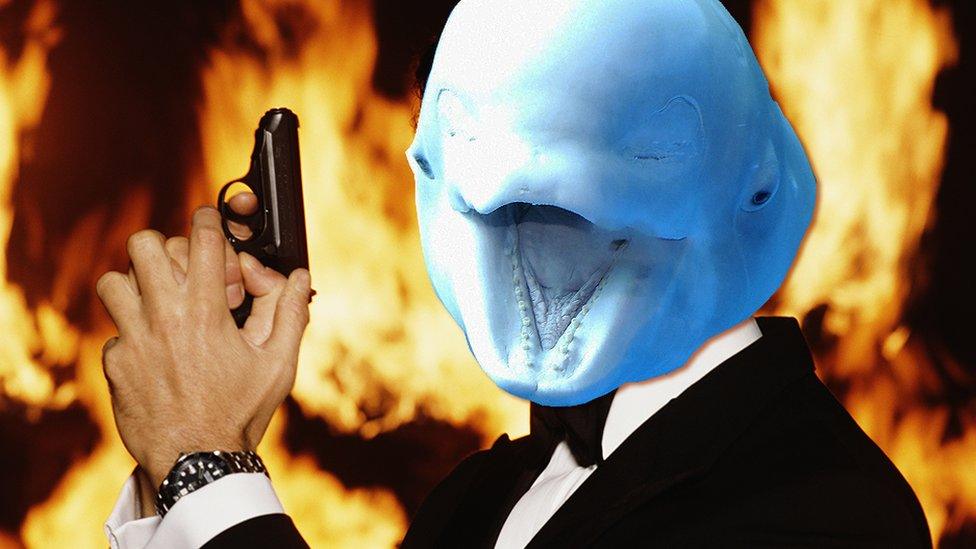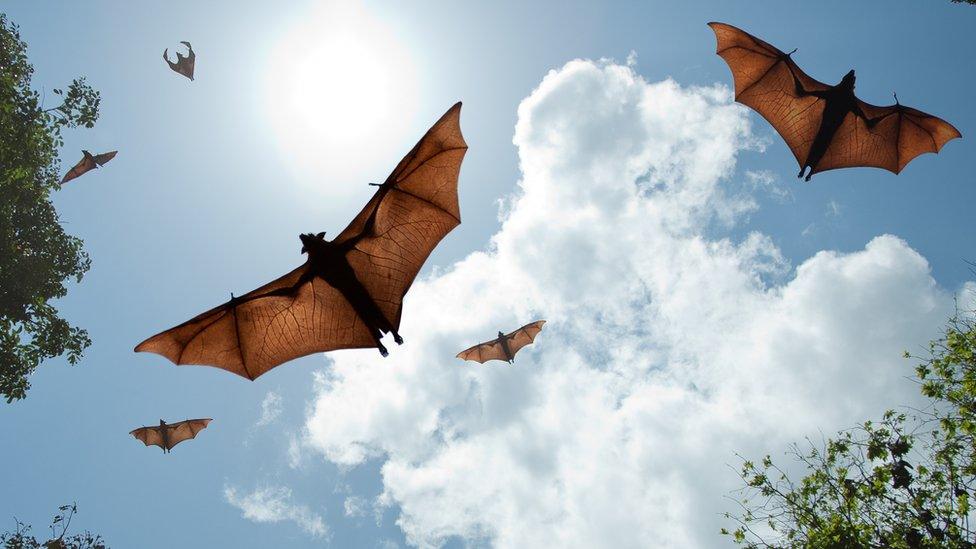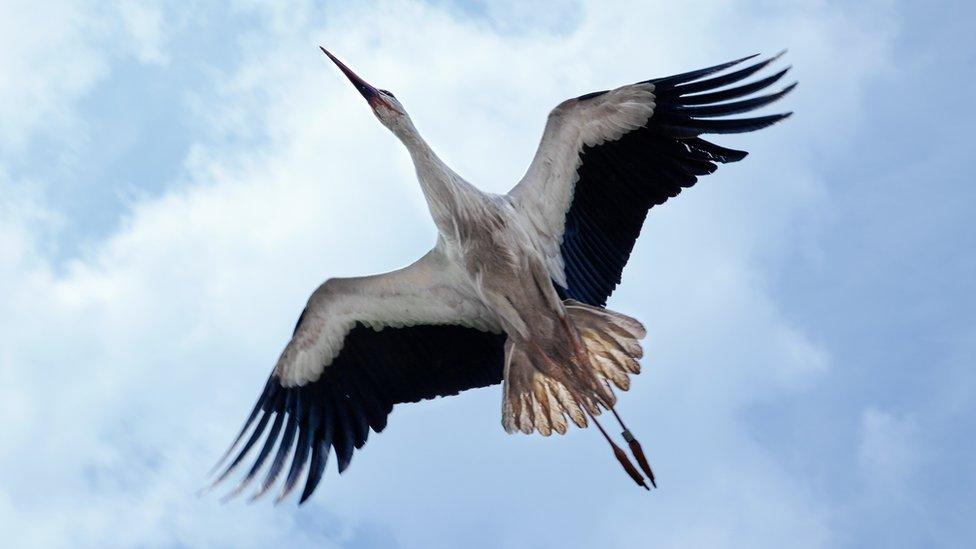Spying whales and other undercover animals
- Published

Licence to krill
First rule of spying - don't look like a spy.
The beluga whale - if that's really its name - found in Norway's waters can certainly tick that box.
But it appears to have committed an absolutely basic rookie sleuthing error.
The reason it's causing suspicion among Norwegian fishermen and scientists is that it was wearing a harness and a label saying it was from St Petersburg in Russia.
Russia has denied any wrongdoing - and so far the beluga is refusing to talk.
Can't or won't?
Regardless of the truth, it certainly wouldn't be the first time undercover animals have been used to spy.
Operation Acoustic Kitty

If there's one thing we know about cats, it's that they do whatever they want, whenever they want.
Admittedly, they're inscrutable and impossible to second guess, so that's possibly why the CIA thought they'd make excellent field operatives.
In the 1960s, it's estimated $14m (£10.7m) was spent on a project to fit listening devices inside cats. The idea was for them to prowl around picking up vital Russian intelligence.
But it ended in failure on day one - when the cat was run over by a car outside the Soviet embassy in Washington.
Bat bombs

They're silent, operate under the cover of darkness and often live in secretive hideouts in caves.
Impeccable credentials for any spy - and a seemingly irresistible combo for America.
During the Second World War, a dentist suggested fitting one million bats, external with tiny incendiary devices.
The idea was to then drop them over Japanese cities where they'd find buildings to roost in - and then explode, causing a fire storm.
Various tests were carried out - including accidentally burning an aircraft hanger down - but the idea never really took off.
Actual listening bugs

A clear case of thinking of the title first and then working backwards, genuine attempts have been made to create "fly on the wall" spies.
Back in 2008, the New Scientist reported, external how the US Defense Advanced Research Projects Agency had tried to develop cyborg insects - with wires inserted into their nerves so they could be controlled.
The possibilities were tantalising - the chance of flying tiny listening devices into your enemy's lair.
Similar projects have already been tried, with varying success, with sharks, rats and pigeons.
With the advance of technology, the focus now is on building tiny listening devices that look like real bugs.
Wrongly accused

The use of animals in espionage has gone on for years - whether it's messenger pigeons in World War One or dolphins used by countries including the US, Russia and Israel to carry out underwater searches.
But spare a thought for those innocent beasts caught on the wrong side of enemy lines.
In 2007 the Iranian army arrested a team of 14 "spy squirrels" found near a nuclear enrichment plant. It was never entirely clear what they were up to.
Birds have also caused a lot of paranoia among the intelligence agencies.

In 2013, the Egyptian authorities detained a stork - and not just because of the suspicious package it was doubtless carrying in its beak.
It was fitted with a tag which rang alarm bells for the security services.
However, it was innocent. The tag was being used by French scientists to track the bird's movements.
The Hartlepool monkey

H'angus the monkey is the mascot at Hartlepool United
Although being accused of espionage is bad enough, at least the stork and squirrels lived to tell the tale.
Unlike the poor Hartlepool monkey.
As legend has it, a French ship was wrecked off the coast of north-east England during the Napoleonic Wars.
The people of Hartlepool had never seen a monkey before - nor, for that matter, had they ever set eyes on a Frenchman.
Mistaking its chattering for the language of the enemy, they convicted the monkey of being a French spy and hanged the animal on the beach.

- Published29 April 2019
